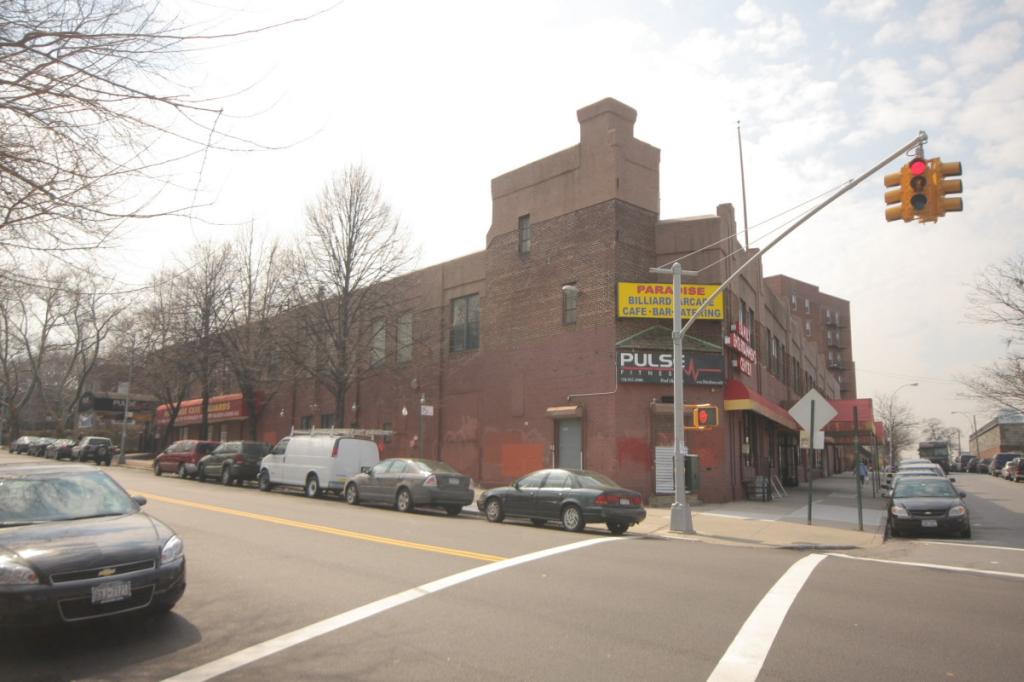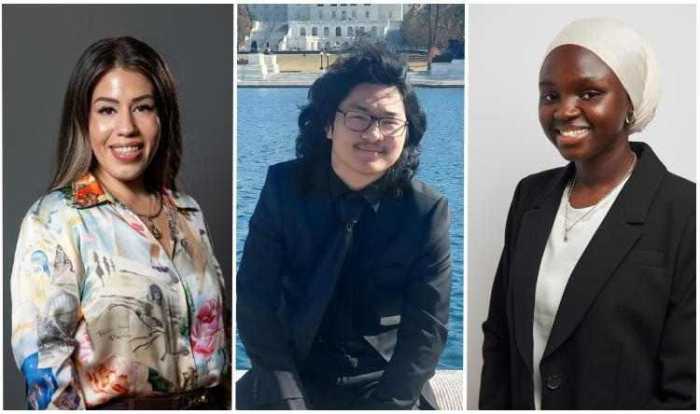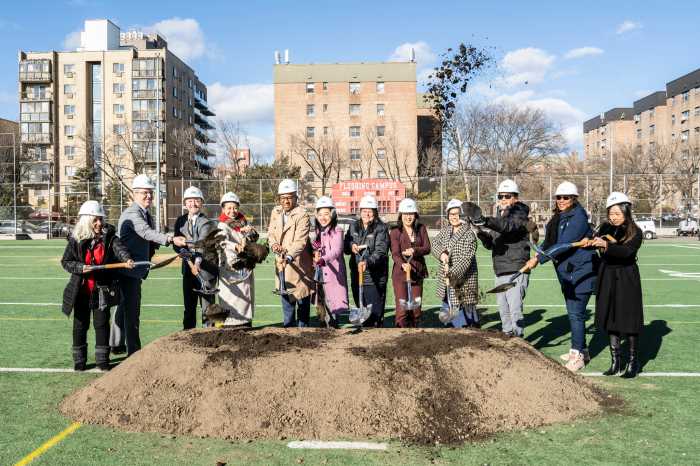Some Sunnyside residents are arguing that a site being proposed for a new middle school should be preserved due to its historical significance.
The two-story building at 38-04 48th St. is located adjacent to houses within the Sunnyside Gardens Historic District. Last month, Councilman Jimmy Van Bramer announced that the School Construction Authority (SCA) had agreed to purchase the private property and turn it into a 600-seat middle school.
Although the building is not technically within the historic district, it is on the National Register of Historic Places and was constructed by award-winning architect Clarence Stein. He constructed a garage there to allow Sunnyside residents to park their cars.
Stein is considered by many as the father of the “garden city” after he designed one of the first planned communities in Sunnyside Gardens between 1924 and 1928. His design was implemented in cities across the nation.
Consisting of 12 “courts,” buildings within the 77-acre Sunnyside Gardens Historic District have private terraces that overlook a shared courtyard to foster community.
Parents in the neighborhood have been asking the city for years to build a middle school in School District 30 since students who live in Sunnyside have no zoned middle school and have been forced to travel to other neighborhoods.
Residents who live in Sunnyside Gardens argue that the building, which was previously used as a billiard hall but has been abandoned since 2013, should be preserved because of its history.
Jeffrey Kroessler, a Sunnyside Gardens resident and an urban historian, said that while he does not oppose a school in the neighborhood, he does not agree with the site location.
“If public monies are going to be used, it has to take into account the National Register listing,” Kroessler said. “I am opposed to this because I don’t believe this is a good site and for a lot of reasons it will have an adverse effect on the neighborhood and the residences and especially the historic houses that back up against this.”
Claire Stein, a Sunnyside Gardens resident whose home is directly adjacent to the proposed site, said her and her neighbors’ safety and quality of life would be “most directly affected by the construction process.” She also argued that the SCA would be sending the wrong message to communities across the city if they demolished the building.
“What message would the School Construction Authority send to children, families and community of New York City, New York state and country if its vision for building for the future is to destroy the past?”
Sean and Deborah McGowan, Sunnyside residents and co-founders of Sunnyside Woodside Middle School Parents, have been working since 2014 to find a site that the SCA would approve. They were inspired by their own difficulties with trying to find school seats for their children.
“I didn’t even get into my zoned school which was P.S. 11,” McGowan said. “I lived directly across the street from it. The only reason why my daughter ended up in 11 is because the principal was willing to double up classes, which broke all the building codes of occupancy. It did mean that we had 36 children in one room, two teachers and two paras.”
Katie O’Sullivan, a Sunnyside Gardens resident and mother of a second-grader and third-grader, had the same experience. She said she is torn on the issue because she wants a middle school that is walk-able for her children but is concerned about preserving the character of the neighborhood.
“I’m extremely concerned about the aesthetics of the neighborhood and keeping the building aesthetics similar and preserved in the same way that it is now,” O’Sullivan said. “I think it’s really important to come up with a very creative solution to preserve the building.”
Deborah Alexander and Valerie Lamour, co-presidents of Community Education Council 30, said that even though they don’t live in the neighborhood, that being a good neighbor is an important part of making a decision.
“I brought my 9-year-old son to the community board to teach him a little bit about community,” Alexander said. “This middle school won’t benefit him, his sister, his friends, but community means taking care of our neighbors even when it doesn’t benefit ourselves. But our children, my son is writing our future history. What will they say about what they’ve heard tonight? What are our priorities? Are we actually a community?”
Community Board 2 members expressed concerns about the lack of design plans presented to them. Lisa Ann Deller, chair of the Land Use Committee, said she was expecting more information.
“This is the first time in my experience that SCA just comes with no plan,” Deller said. “When we spoke at Land Use Committee I was actually so surprised that his presentation was so brief. I couldn’t believe that that was all they told us.”
Mirasola said the 25,000-square-foot property would probably rise four or five stories and that the SCA has to collaborate with the National Register of Historic Places to determine whether the site is viable.
He said the agency has worked with other community boards to preserve elements of historic buildings-turned-schools, including P.S. 398 in Jackson Heights and an old church in Brooklyn that was converted into a school.
Board member Stephen Cooper said the board has suggested 50 to 60 sites to the SCA but they have all been shot down. He argued that CB 2 has always been involved in the site selection and is concerned about giving the agency permission to build with little information.
“The fact is we don’t know what you’ll do and you’re asking us to simply give you a carte blanche to do it because once we approve that site selection…we’re going to be stuck with whatever they want to do. How do you expect us to vote?”
The SCA is accepting public comments until Nov. 4 and will then work with the National Register of Historic Places and City Council to determine the viability of the site. The public can send comments to sites@nycsca.org.
The majority of board members decided to table the discussion until the next board meeting on Nov. 3. Some board members, like Carol Terrano, warned members that if the school was turned down, a developer could purchase the property and build something bigger.
Terrano, who lives in Woodside, said her community turned down plans to build a tennis court and were stuck with a “terrible structure.”
“It seems to me like all these people who are worried about all this wonderful architecture and design, where were they when the building was falling down and rotting away and everything else?” Terrano said. “That’s kind of interesting to me.”





































